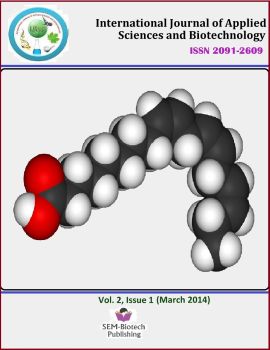Feasibility of real time PCR over cell culture in diagnosis of influenza virus infection: an experience of rade I viral diagnostic laboratory of developing country
DOI:
https://doi.org/10.3126/ijasbt.v2i1.9860Keywords:
Conventional viral culture, Real time RT PCR, Molecular diagnosis, Transportation time, cost per sampleAbstract
Introduction: In spite of the discovery of viral culture technology about a century ago, its application in diagnostic labs is being used since 1970s. It served as the "gold standard" for virus detection for long. In recent years, rapid, technically less challenging, sensitive and highly specific viral identification is possible by molecular tools. Hence, the purpose of this study was to analyze the importance of real time PCR over virus culture in diagnosis of Influenza virus infections, the biggest viral challenge of present India, a developing country, so that prompt and correct diagnosis can help physicians as well as the policy makers to control the virus spread.
Objective: To study the feasibility of real time PCR vis a vis viral culture technique and evaluate the utility of these methods for laboratory diagnosis of Influenza virus infections.
Methodology: The study was conducted in Grade I Virology Diagnostic laboratory, Dept of Microbiology, KGMU, Lucknow. We used both real time RT-PCR and viral culture methods (on MDCK cell lines) for detection of Influenza virus infection and compared the effect of transport time, cost per sample and turnaround time on both the techniques.
Results & Conclusion: Real time PCR is more practical, more sensitive, quicker and cost effective. It needs less expertise and availability of reagents is better. Though viral culture proved to be highly specific and useful for wide application but the use should currently be limited to mostly research facilities. Therefore for epidemiological diagnosis purposes real time PCR detection of Influenza virus is advised.
DOI: http://dx.doi.org/10.3126/ijasbt.v2i1.9860
Int J Appl Sci Biotechnol, Vol 2(1): 97-102




